‘Reliability’ is among the many factors car buyers consider before spending a lump sum of money on a brand-new car. We know that a vehicle is supposed to be a one-time investment instead of paying out several installments in the form of (regular) maintenance or servicing costs. Therefore, one of the few questions you’ll likely Google – before buying a car – is: Do you have to change the oil filter every time?
- What Is An Oil Filter
- Oil Filter Function
- Synthetic Oil Filter
- Bad Oil Filter Symptoms
- Oil And Filter Change
- Do You Have To Change It?
- FAQs
Buying a car is an investment that is supposed to last for more than 6 or 7 years – or maybe even more. Nobody likes paying out maintenance costs frequently right after you buy a car. Regular maintenance (or servicing) costs such as engine oil replacement, fluid level inspection, and tire replacement are the last thing car buyers want in their newly-bought cars.
Among the many servicing or maintenance costs is the oil filter replacement cost. Oil filters are as important as any other mechanical component when it comes to ensuring a long and healthy engine life.
This article covers everything from oil filter functions, bad oil filter symptoms, and synthetic oil filters. More importantly, it answers the following question: Do you have to change the oil filter every time?
What Is An Oil Filter
Simply put, an oil filter has the prime job of filtering out pollutants and contaminants from the oil before the oil reaches the engine. So, the oil filter prevents dirty (or contaminated) oil from entering your engine and wreaking havoc on your engine components. Moreover, oil filters are used in all hydraulic motors, be it locomotives, ships (or boats), trucks, power generators, or aircraft.
An oil filter shares much of its resemblance with engine air filters; even their (frilled filter) designs match each other. An engine air filter traps polluted air and instead supplies clean air to the intake manifold. The oil filter works in the exact same manner. But instead of filtering out air, an oil filter filters (dirty) oil.
There’s no denying the fact that oil is as essential to your engine as anything. Without sufficient lubricant, the vehicle’s engine components would starve (of oil), grind, and eventually seize up.
Engine oil has to journey through various pipes and cisterns that can cause the lubricant to catch some impurities. Impurities such as metal particles (or other contaminants) can build up in your engine and block the engine assembly. In other words, the vehicle engine would fail to perform its function – that is, to generate power.
Failure in supplying clean oil will cause harm to the engine. For instance, constant metal-to-metal grinding will cause the engine to erode and wear out. Also, as metal grinds against metal, a series of clicking sounds are generated, indicating that something is wrong with the engine.
So, if impure oil continues to flow through the engine, you’ll be looking at a long bill at the workshop. An oil filter prevents dirty oil from making your engine fragile.
How Do Oil Filters Work
We read what an oil filter is and its chief responsibility. But how does it function? How does a mug-sized component cause significant changes to your engine’s health (and performance)? Let’s see.
The oil filter paper sits in a metal cylindrical box casing. As the oil enters the filter through several tiny inlet holes, the oil pushes against the anti-drain valve rubber flaps. The job of an anti-drain valve is to prevent the oil from leaking from the filter.
After making contact with the anti-drain valve, the oil will flow around the filter casing. Eventually, the oil reaches the (paper) oil filter. The filter paper (made from a combination of synthetic materials) rids the lubricant of unnecessary pollutants and contaminants. As the lubricant passes through the paper, the (filtered) lubricant is drained to the center of the cylindrical casing.
Finally, the lubricant is ready to be supplied to the engine components. Modern oil filters include several other filters and valves, including secondary oil filters and by-pass valves, to ensure engines survive in harsh conditions.
Speaking of harsh conditions, many oil filters tend to clog up at low temperatures. In low temperatures, the lubricant can freeze in the oil filter and, eventually, block the lubricant from reaching the filters.
A clogged-up (or blocked) oil filter can be one of the few reasons for a faulty oil filter. However, the latest oil filters use an emergency oil flow system and by-pass valves to prevent the lubricant from clotting up.
Synthetic Oil Filter
Several drivers opt for a synthetic oil filter to maximize engine performance and extend the engine’s health. A synthetic oil filter replaces the traditional paper oil filter with synthetic-grade material in the oil filter itself. The high-quality synthetic material comprises synthetic fibers, including glass and polyester, which improves the filter’s performance.
Even though synthetic oil filters can be coupled with synthetic engine oil, you should use oil filters that are compatible with synthetic oils.
Under the microscopic eye, a synthetic oil’s molecules are of the same size and structure. So, synthetic oils allow more uniformly-packed molecules to fit in. As a result, the (denser) synthetic oil helps the engine achieve its maximum, which can be seen in the form of better performance and fuel economy.
Moreover, synthetic oils have a high viscosity (thickness) index. So, synthetic oils are less likely to clot up in the filter under low temperatures than conventional engine oil.
Better oil flow in low temperatures ensures that the filter supplies the engine components with enough oil for proper functioning. So, a synthetic oil filter can go a long way in improving your engine’s health in the long run.
In addition, the high viscosity content reduces friction and wear in the (moving) engine components. Not only does the engine become more durable but it also becomes less vulnerable to breaking.
Moreover, synthetic oils are expected to last longer than conventional oil and require servicing after long intervals. Now that you think of it, synthetic oil shares much of its resemblance with an energy drink; more power, better efficiency, and long-lasting performance.
Yes, a synthetic oil filter can cost more than a conventional oil filter, but it is 2 – 3 times better than conventional oil filters.
Bad Oil Filter Symptoms
So, we saw how an oil filter keeps the engine up and running. We also read about the benefits of using synthetic oil (or synthetic oil filter) as an alternative to conventional motor oil.
But what if an oil filter fails to work? What effects can a (faulty) small toy-like component have on the vehicle’s engine and driving dynamics? And finally, what signs should you look out for in a bad oil filter? Let’s see how.
- Poor engine performance
- Engine overheating
- Knocking or grinding sounds
- Oil leakage
- Dirty exhaust fumes
Do You Have To Change The Oil Filter Every Time Symptom #1. Poor Engine Performance
A clogged oil filter will prevent oil from entering the rest of the engine components. So, without a proper lubricant supply, the engine may not function as intended. Eventually, the clogged oil filter will cause contaminated motor oil to enter the engine assembly.
The (oil) pollutants and particles will accumulate over time and create blockages in the engine components. Consequently, the engine will come under extreme load and will find it challenging to manage (and generate) power.
So, in the case of a clogged oil filter, poor engine performance can take the form of a lack of acceleration, reduced power, and engine lag. If you’re feeling that your vehicle’s engine is not performing to its best, it may be the case of a clogged oil filter.
If the issue goes unattended for longer, the vehicle’s engine will become even more vulnerable. As more particles accumulate in the system, the engine will come under even more load. Eventually, the engine would starve of oil, bringing a host of other issues and engine malfunctions to your doorstep.
Do You Have To Change The Oil Filter Every Time Symptom #2. Engine Overheating
A clogged filter can go a long way in overheating the engine, which can lead to even severe consequences in the long run if untreated. A bad oil filter fails to filter in clean oil to the engine, causing the engine components – especially the cooling agent – to work extra hard.
So, as the oil heats up, so does the engine. Eventually, the vehicle’s dash may throw a ‘high temperature’ warning light indicating the engine is overheating.
Moreover, the lubrication quality may decline with time even though the oil filter is in good form. Therefore, as the lubrication begins losing its contents (or properties), the (live) engine components may face difficulty functioning as intended. So, the engine starts overheating and becomes even more vulnerable.
Do You Have To Change The Oil Filter Every Time Symptom #3. Noisy Engine
A clogged oil filter may be one reason the engine keeps making knocking or clicking sounds. Lack of lubricant provision to the engine components can contribute to grinding noises due to the metal-to-metal contact. As the metal clashes against metal, a series of knocking sounds are produced.
Clicking noises can mostly be heard when the engine is accelerating. In the case of acceleration, the engine components, including crankshafts, piston rods, and rocker arms, would have to work extra hard. As a result, even more noises are being generated.
Also, low oil pressure coupled with a high RPM can cause excessive wear on the engine cylinder walls. Eventually, the pistons would grind against the cylinder walls, creating a gap between them and the pistons themselves. The term ‘piston slapping‘ describes the (clicking) noises made by the pistons’ movement.
Therefore, if you notice any unusual clicking sounds coming from the engine bay, chances are that the oil filter has gone bad and needs replacing.
Do You Have To Change The Oil Filter Every Time Symptom #4. Oil Leakage
A dirty oil filter prevents the smooth flow of oil from the filter to the engine. As a result, the oil filter has to work extra hard to keep up with the oil pressure. As more and more (oil) pressure builds on the oil filter, the oil may start to leave the filter.
Even though oil filters comprise a rubber O-ring on the oil filter gasket to prevent the oil from leaking, the oil may still leak. Also, the car’s ECU will throw an oil pressure warning light on your dash, indicating a too-high oil pressure. Therefore, if you’re noticing external oil leaks from your car, there are bright chances that the oil filter is clogged.
Do You Have To Change The Oil Filter Every Time Symptom #5. Dirty Exhaust Fumes
A dirt-jammed oil filter can disrupt the smooth flow of clean oil to the engine components for further processing. Instead, the clogged oil filter supplies contaminated oil full of harmful particles, which reduces the oil’s performance.
As the impure/contaminated oil is burnt during combustion, harmful gases are formed. Eventually, the toxic gases take the shape of black fumes (or smoke) coming from the tailpipes.
Therefore, if your vehicle is letting off unnecessary black soot or fumes from its exhaust system, chances are that the oil filter has gone bad and needs attention. Failure in attending to the black smoke can cause harm to the environment and raise further issues for your engine. In addition, the bad fumes may even enter the cabin, which can worsen the quality of air that you can breathe.
Oil & Filter Change
Now that you’ve noticed a couple of the bad oil filter symptoms, the next thing on your list should be the oil and filter change. You can either pay a visit to the specialist workshop or change the oil filter (or the motor oil) at home and save yourself a handful of money.
Also, it is best to change oil filters instead of only replacing the motor oil itself. The old (faulty) filter would be unable to filter the new oil and would still leave the job undone.
There are numerous YouTube videos and in-depth guides that’ll help you in an oil and filter change. So, if you’re still facing issues changing the oil filter by yourself, then YouTube is your best friend. Nevertheless, you can go through the following steps for a (safe) oil and filter change at home.
Step 1: Prepping The Vehicle
Turn off the car’s ignition and pull the emergency brake to prevent the vehicle from moving. Next, safely lift the car and support it on some jack stands. More importantly, make sure that the vehicle is safe enough for you to work underneath it.
Step 2: Draining Old Oil
Locate the oil pan attached to the bottom of the engine. Ensure that the oil pan has an oil drip tray underneath it before unscrewing the bolts. Next, with the help of a torque wrench, safely unscrew the bolts until the oil starts flowing to the oil drip tray.
Now, wait as the gooey black oil drains onto the oil drip tray. Once the oil stops flowing, screw back the bolts holding the pan in its place.
Step 3: Oil Filter Service
Now, locate the oil filter, which you can find near the oil pan. The exact location can differ from car to car and engine to engine. The most appropriate way of determining the exact location of your vehicle’s oil filter is through the owner’s manual.
Once you’ve found the filter, use an oil filter wrench to loosen it and simply twist it right off the assembly. Replace the old oil filter with the newer (manufacturer-recommended) one by repeating the above procedure.
Step 4: Filling-In New Oil
Once the old motor oil is out, you can start filling in the newer oil. Also, double-check the newer motor oil that should match the manufacturer’s recommendation to avoid future repercussions. After topping the engine with the specified amount of motor (or synthetic) oil, let the vehicle sit for a minute or two.
Next, inspect the vehicle’s oil levels with the help of the oil dipstick. After ensuring the oil levels meet the dipstick’s (recommended) mark (with a bit of help from how to read oil level on dipstick), you’re good to go. You can take further precautionary measures, such as inspecting for oil leakages, to ensure that everything has been done accordingly.
Do You Have To Change The Oil Filter Every Time
As mentioned earlier, it is best to replace the oil filter every time you change the engine oil. Therefore, it is advised to get both the oil filter (and oil) changed every 3,000 miles. But then again, the intervals (in terms of miles) can differ on several factors.
For instance, for synthetic oil users, the lubricant can last longer than conventional motor oil. Also, synthetic oil filters have a higher life expectancy than conventional oil filters. So, you’ll be looking up to 10,000 miles of trouble-free driving before replacing your (synthetic) air filter.
In the same way, the recommended interval for replacing the oil filter in diesel engines is about 10,000 miles. And for petrol engines, the oil filter replacement intervals are carried every 6,000 miles. Also, other factors, such as engine type, car model, and driving conditions, may influence the interval at which you’d have to change the oil filter.
Therefore, to get a clearer picture of the oil filter change intervals, it’s better to refer to the vehicle’s owner manual.
Oil Filter Facts: What You Need to Know
- An oil filter purifies the oil in your car’s engine to prevent dirt and metal flecks from clogging the system and damaging engine components.
- Clean oil helps increase the life of your car’s engine, making the oil filter an essential component of your vehicle.
- Using a good quality oil filter with filter paper and a check valve can spare you from costly auto repairs down the road.
- The manufacturer suggests changing the oil filter every 6,000-10,000 miles, while the oil change tech may recommend every 3,000-5,000 miles.
- Extreme driving conditions such as stop-and-go traffic, high temperatures, dusty conditions, or towing heavy loads may require more frequent oil filter changes.
- It’s better to spend a few extra dollars and change the oil filter too frequently than not enough.
- Most mechanics replace the oil filter every time the oil is changed.
- Changing the oil filter each time you change the oil drives up the cost of yearly auto maintenance.
- Asking questions about the quality of the oil filter your mechanic uses is in your best interest.
- The actual filter is tucked away within the oil filter can.
Do You Have To Change The Oil Filter Every Time – FAQs
Here are some popular FAQs:
How To Change Oil Filter
After locating the oil filter, get yourself an oil filter wrench and start loosening the bolts holding the filter in place. Upon loosening the oil filter, twist the filter and safely pry it off of the assembly. Next, compare the new and old oil filters to ensure that the filters exactly match. Now, twist the oil filter back in its place and tighten the bolts using the oil filter wrench. Also, ensure not to apply too much pressure while torquing to avoid the filter from snapping right off the assembly.
How Often To Change Oil Filter
For most cars, it is advised to change oil filters – alongside the motor oil – every 3,000 miles. Now, the exact oil filter replacement interval may depend on factors such as driving conditions, vehicle age, and the car model. For instance, synthetic oil filters last longer than conventional engine oil filters. Therefore, synthetic oil filters need replacing every 6,000 miles or so. With that said, you can refer to the vehicle’s owner manual for a more accurate representation of the oil filter replacement interval.
Where Is The Oil Filter
An oil filter is located near (or to the side of) the vehicle’s oil pan. However, the exact location of the oil filter may vary from car to car and engine to engine. Therefore, to get an accurate picture, you should refer to the vehicle’s owner’s manual, which can guide you in locating the oil filter for your respective car.
How Much Is An Oil Filter
There are varying answers to the (above) straightforward question. The type of oil filter used in a vehicle can vary from manufacturer to manufacturer, hence their variable costs. Assuming a scenario that includes replacing both the engine oil and the oil filter, you should expect a cost of $40 – $75. But if you prefer changing the oil filter (and filter alone), the price dramatically drops to $15 or even $7 for top-quality oil filters. But then again, the cost can depend on your region or even the oil filter type used. So, synthetic oil filter users should be expecting a cost of $65 to $125, which includes changing the oil and the oil filter.
What Does An Oil Filter Do
An oil filter – as the term suggests – filters out unnecessary pollutants and particles from the motor oil before passing the oil on to the rest of the engine components. By doing so, oil filters help keep the engine’s health in check. Oil filters prevent unnecessary particles from building up in the engine parts, which allows the engine to operate without any hiccups. As you’d have guessed, a bad oil filter is the opposite of a fully-functioning oil filter. So, a bad oil filter makes it difficult for the engine to function properly.

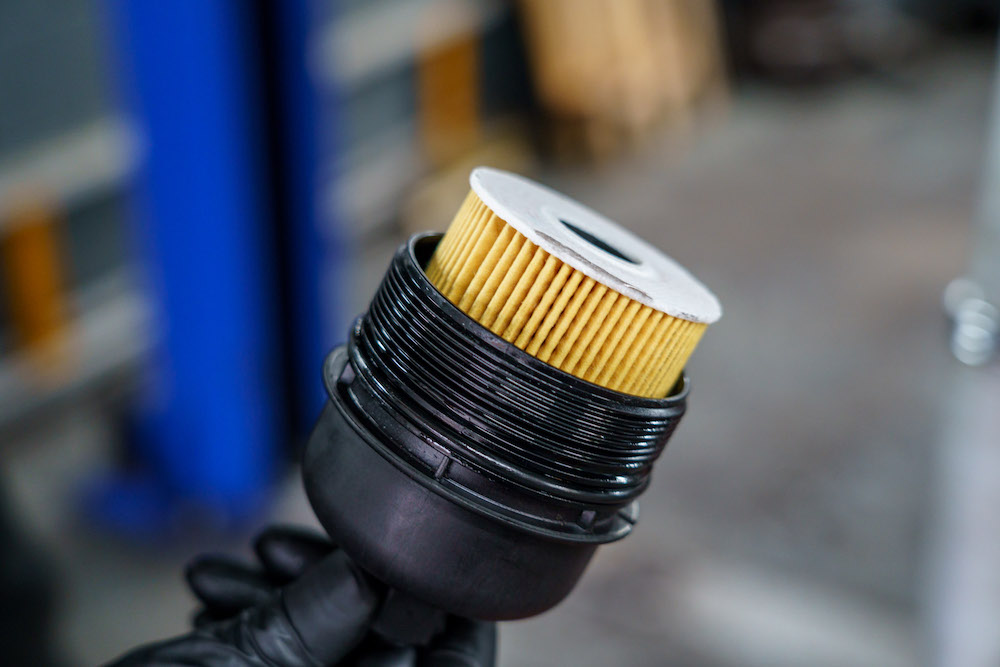
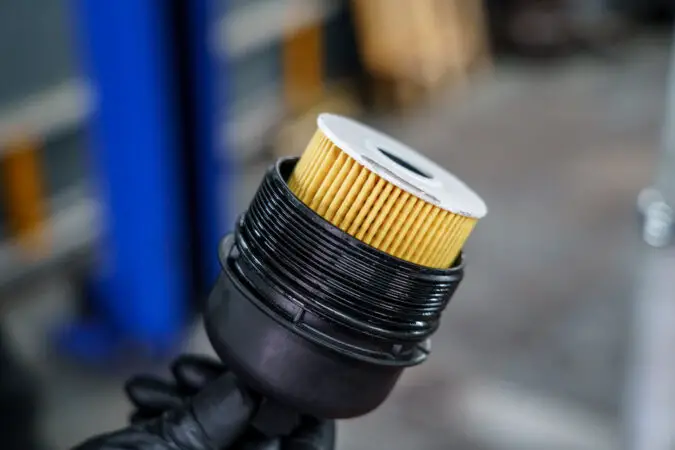
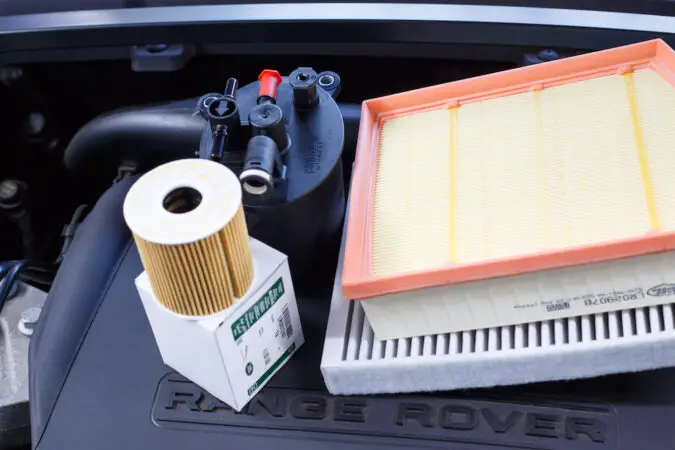
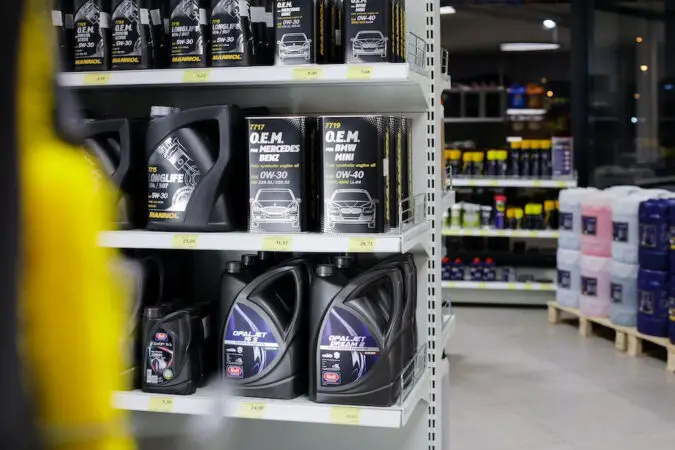

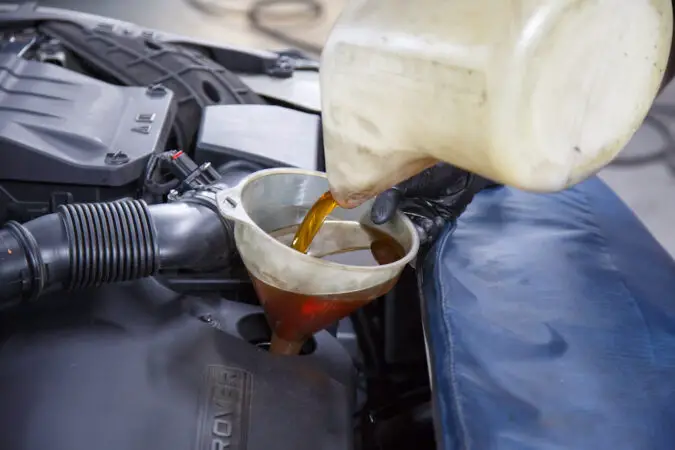
1 comment
I never knew that neglecting your engine oil could affect your driving experience and damage your engines. I have been thinking about owning a vehicle to drive to my girlfriend’s home whenever possible. I will be sure to find a car repair expert that offers oil change services as a part of its maintenance routine.